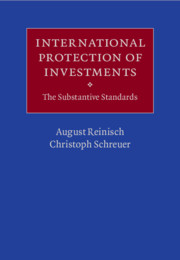Refine search
Actions for selected content:
8 results
The Case for WTO Collective Action
-
- Journal:
- World Trade Review , First View
- Published online by Cambridge University Press:
- 27 November 2025, pp. 1-29
-
- Article
-
- You have access
- Open access
- HTML
- Export citation
14 - Investment
-
-
- Book:
- The Cambridge History of International Law
- Published online:
- 01 May 2025
- Print publication:
- 29 May 2025, pp 435-468
-
- Chapter
- Export citation
Case 28 - Charcot–Marie–Tooth Disease (CMT) Type 2 A and Type 2B
- from Peripheral Neuropathies
-
- Book:
- Neuromuscular Disease
- Published online:
- 29 November 2024
- Print publication:
- 19 December 2024, pp 149-150
-
- Chapter
- Export citation
6 - Trade as a Weapon
-
- Book:
- The Russia Sanctions
- Published online:
- 14 December 2023
- Print publication:
- 21 December 2023, pp 66-78
-
- Chapter
- Export citation
Tariff Flexibility Amid Formation of Preferential Trade Agreements: WTO Law vs. PTA Law
-
- Journal:
- World Trade Review / Volume 22 / Issue 5 / December 2023
- Published online by Cambridge University Press:
- 21 June 2023, pp. 680-692
- Print publication:
- December 2023
-
- Article
-
- You have access
- Open access
- HTML
- Export citation
13 - Addressing the Right to Regulate in the CPTPP Investment Chapter: Identifying New Treaty Practice
-
-
- Book:
- The Comprehensive and Progressive Trans-Pacific Partnership
- Published online:
- 11 November 2021
- Print publication:
- 02 December 2021, pp 288-313
-
- Chapter
- Export citation
2 - The Process of Susceptibility and Exclusion
-
- Book:
- At the Margins of Globalization
- Published online:
- 23 April 2021
- Print publication:
- 13 May 2021, pp 23-35
-
- Chapter
- Export citation

International Protection of Investments
- The Substantive Standards
-
- Published online:
- 13 July 2020
- Print publication:
- 16 July 2020
